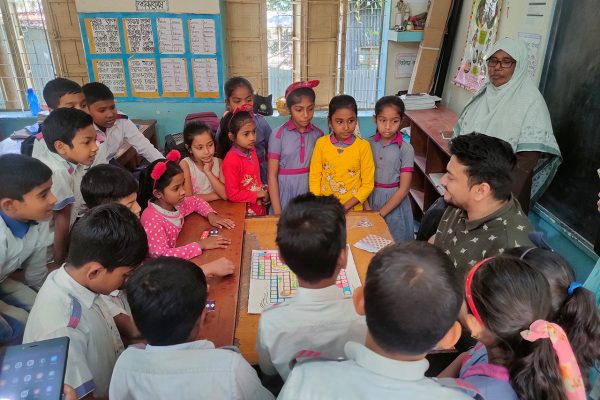Culture clash: The ‘not-so-dirty’ secret of digital transformation
Reading Time: 3 minutes
Successful change management involves winning the hearts and minds of people.
The COVID-19 pandemic has led many institutions to fast track the implementation of digital technology across its business functions. Now, it has become a necessity for the survival of any business. But what does it take to transform into a digital organisation?
Digital transformation is all about changes – from strategy, technology, to processes and the structure of the organisation. But at its heart, digital transformation is ultimately a test of an organisation’s culture. Therefore it’s not surprising that a Mckinsey survey identified culture as the most significant barrier to digital transformation.
Some organisations are typically risk-averse. They often take the slow and careful route in a rapidly changing environment. They lack innovation to meet clients’ needs and mostly resort to replicating what others are doing. One of the greatest reasons why digital transformations fail is legacy thinking. The notion “this is how we have always done things” is a big source of resistance among staff. It can be intimidating for people who are insecure about their jobs and do not fully understand what digital transformation entails.

Successful change management involves winning the hearts and minds of people. It requires careful planning and practice. Most importantly, it requires keeping people at the centre of the design, so that staff as well as clients are not disoriented by the dynamic changes.
BRAC Microfinance has been going through digital transformation for the last few years, focusing heavily on digitising delivery channels and incorporating technology in core field operations. Here are five ways we are developing a digital culture across the seven countries in Asia and Africa that we operate in.
- Adopting an agile mindset: Digital transformation should start with small pilots and use lessons learned to scale. As part of the agile mindset, BRAC Myanmar is piloting the Ongo agent model for payment collection. Different models such as: Ongo to group (Ongo agents visits group meetings to collect instalments) and borrower to Ongo (BRAC customer deposit money at an Ongo agent) are among the models being piloted. Learnings from this pilot will inform future scale-up. BRAC Uganda is also fast tracking the implementation of digital channels such as mobile and agent banking in response to the ongoing pandemic. Learnings from past pilots are helping inform the deployment model.
- Articulating the change required: Undertake an institutional readiness assessment to identify existing cultural biases. This will inform behavioural levers required to bridge the identified biases. BRAC has conducted digital feasibility studies in Liberia and Sierra Leone to understand the operational readiness to implement digital transformation. Additionally, to effectively train employees to address identified skill gaps from the institutional readiness assessment and recruiting additional talent to drive the change. At BRAC, digital transformation experts and digital-savvy staff are essential recruitments for country microfinance entities to enable the transition.
- Managerial buy-in: Change should start from the top. It should be clearly articulated in the organisational strategy and consistently encouraged. BRAC has a digital transformation strategy that places change management at its centre. Additionally, country management are involved in the design and implementation of the digital field application to ensure their buy-in. This process involves vendor engagement, business process review, pilot planning and regular status update to be informed on the progress of the project.

- Aligning the organisation to embed the new culture: Design employee recognition programmes that reinforce staff behaviour towards the desired change, and redefine cultural values by establishing an environment conducive to continuous improvement. BRAC’s strategy towards digital transformation clearly articulates employee recognition as a key focus area for success.
- Prioritising clients’ needs: Organisations should co-create products with clients. Through client-centric design, develop a minimum viable product that generates value to clients and refine with time. Client-centric product development is a core pillar of BRAC’s microfinance programme. One example is the women’s microenterprise loan product in Myanmar. Having reached over 4,500 clients since July 2018, the product was designed following a financial diaries research by BRAC and L-ift with support from UNCDF’s SHIFT.
Ultimately, the most effective change management plans are those that involve pragmatic actions focusing on changing elements of human behaviour to get everyone on board. It is not a digital transformation without a strong digital culture!
Mercy Wachira is a digital transformation manager, microfinance programme at BRAC International Holdings B.V.





